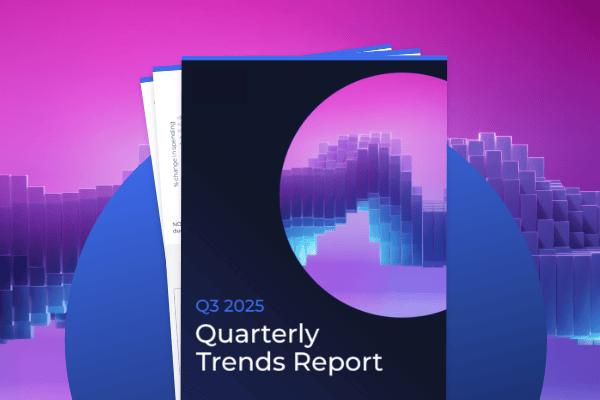Summary
Data clean rooms in retail media are no longer experimental—they’re becoming essential infrastructure for secure, privacy-compliant collaboration between brands and retailers. With 66% of organizations adopting them in some form, the challenge now lies in integration: wiring clean rooms into planning, activation, and reporting. As these tools evolve from isolated pilots to foundational systems, they’re enabling smarter attribution, shared insights, and more strategic media investments. The retail media ecosystem has a rare opportunity to embed clean rooms from the ground up—turning data collaboration into a competitive advantage.
Data clean rooms weren’t created to be a shiny new tool—they were developed to solve a real and growing problem: how to collaborate across companies in a way that’s secure, privacy-compliant, and actually usable. In retail media, where brands and retailers rely on shared data to reach shared customers, that need couldn’t be more relevant.
And because retail media is the most recent major advertising channel, there’s an opportunity here that doesn’t exist in more established spaces. It can be built right from the start—with clean rooms not bolted on, but built in. That means more transparent measurement. More accurate attribution. Smarter ways to plan campaigns across the aisle, the shelf, and the screen.
It’s no wonder, then, that WPP recently acquired data clean room startup InfoSum, underscoring how central these tools have become to the future of advertising collaboration. Moves like this show that major agencies and holding companies see clean rooms not just as nice-to-have technologies, but as foundational infrastructure for secure, scalable data collaboration across industries.
Imagine a world where clean-room outputs don’t just live in a silo—they flow directly into retail media activation, optimization, and reporting. Where brands know exactly how a campaign drove both in-store and online sales. Where retailers can offer better inventory intelligence because their partners are feeding real-time insights back into the loop. That’s what’s possible when clean rooms aren’t just tested—they’re integrated.
We’re not there yet. But the pieces are starting to come together. According to the 2025 State of Retail Media report, nearly two-thirds of organizations are already using clean rooms in some form. The infrastructure is emerging. The ambition is there. If retail media is going to lead the future of advertising, this is one of the systems that will make that possible.
Clean rooms are gaining ground, but adoption doesn’t equal integration
Adoption is up. Close to 66% of organizations say they’re using clean rooms in some capacity, but how that looks day to day varies widely. Some teams are running structured tests with multiple data partners. Others are still navigating platform selection or permissions workflows. The usage curve is steep—and everyone’s somewhere different on it.
Zoom in, and you’ll see more experienced advertisers pulling ahead. In consumer electronics, for instance, clean room usage reaches 65%, thanks to earlier infrastructure investments and heavier budget allocations. Among companies spending more than 35% of their media budget on retail media, usage is even higher. It’s a reminder that clean room success tends to follow organizational readiness—not just interest.
As Colin Lewis, editor-in-chief for retail media at InternetRetailing, puts it: “Clean rooms are one of the hottest technology topics in retail media… The challenge of integrating data clean rooms in existing practices and joining data with other sources is the core problem.” There’s curiosity everywhere. But turning that curiosity into impact takes more than a pilot.
Integration is still the bottleneck—but it’s starting to loosen
“Their adoption has been slower than you would think given that…collaborating with data in a secure manner that aligns with privacy rules is incredibly important,” says Lewis.
The real challenge most teams face is integration—clean rooms don’t naturally plug into the average campaign planning or measurement workflow. They require real lift: technically, organizationally, operationally.
In this year’s research, 41% of respondents said that integrating clean rooms into existing optimization and analysis practices is their top hurdle. That’s up from last year, reflecting a shift from “what is this?” to “how do we use it?” Friction isn’t a sign that something’s broken—it’s often a sign that adoption is maturing.
Beyond integration, challenges include scaling as more data is added (38%), lack of internal expertise (34%), and driving action from the data (33%). There’s also a quiet-but-growing concern around joining clean room outputs with other datasets like shelf analytics or performance reporting, especially as retail media programs mature.
Among senior leaders, the challenges tend to cluster at a more systemic level. 48% of this group pointed to integration as a key issue, while 44% flagged scaling analysis as new data is collected. Leaders were also more likely to cite permission/legal challenges and difficulties connecting clean room insights to other sources—things that sit upstream from execution but directly impact how scalable these efforts are across the organization.
Agencies, on the other hand, are more likely to highlight challenges in activation. 39% said they struggle to drive actionability from clean room data, while nearly a third cited lack of internal expertise and difficulty creating a usable baseline. Agencies are often working across multiple retailer and brand environments, so it tracks that they’re seeing fragmentation and setup overhead as major barriers. It’s not that they don’t believe in the value—it’s that operationalizing it takes more coordination than most scopes account for.
As the 2025 State of Retail Media report puts it, “Among those utilizing data clean rooms to some degree, the most common challenges include integrating with other practices… and scaling as new data is collected.” But the tone is shifting. These aren’t red flags—they’re signs of teams doing the hard work to build something that lasts. And for many, the next step isn’t exploring clean rooms—it’s finally wiring them into the rest of the system.
Clean rooms are evolving into the connective layer of commerce media
The more clean rooms get built into daily workflows, the clearer their strategic value becomes. Yes, they’re privacy tools. But at their best, they’re collaboration engines—enabling shared planning, joint data activation, and end-to-end measurement between retailers and brands.
Image from How Retailers Are Using Data Clean Rooms
(IAB.com, Jeffrey Bustos)
In an ecosystem where multiple players own different parts of the shopper journey, that kind of secure collaboration unlocks real possibilities. Retailers can surface deeper insights without exposing PII. Brands can bring their own data to the table without losing control. And networks can finally support integrated media and commerce performance—not just media in isolation.
The IAB calls clean rooms “a safe environment for second-party data collaboration,” highlighting their role in facilitating privacy-compliant partnerships across advertisers and retailers. It’s this structural safety—alongside the potential for deeper insights—that gives clean rooms their staying power as retail media matures.
Michele Giliberti, co-founder and CEO of XPN, put it well: “Integrating clean rooms with existing practices and scaling as new data is collected presents a clear opportunity for innovation.” Clean rooms make that fusion possible.
As retail media scales, clean rooms are becoming less of a feature and more of a foundation. The systems that support collaboration at this level will define which platforms stay relevant over the long term.
Use cases are getting sharper—and the ROI conversations are changing
The clearest signal that clean rooms are here to stay? The use cases are no longer theoretical. They’re practical, measurable, and increasingly tied to core KPIs. Attribution modeling, incrementality testing, channel planning, and share-of-wallet analysis are already in flight at leading brands.
Image from Drive Your Retail Media Strategy with Data Clean Rooms
(Snowflake.com, DeSutter)
Snowflake notes that their partners are using clean rooms to connect online and in-store sales, align media investment with inventory performance, and improve demand forecasting. The key difference? Clean room insights are no longer used just to prove value—they’re starting to guide where dollars go in the first place.
In eMarketer’s 3 Ways Data Clean Rooms Help Solve Retail Media’s Data and Measurement Challenges, there’s a poignant quote by Dentsu’s Kavita Cariapa, “One of our biggest wins with data clean rooms is when we use it as a baseline to inform channel investment… It’s become a robust guideline for how we analyze data and consult with our clients.”
Another executive in the article added that clean rooms “allow us to kind of report back performance with a high degree of accuracy to our supplier partners,” referencing how CVS uses ExtraCare member data in conjunction with Pinterest’s audience data. The insight here isn’t just about measurement—it’s about shared visibility that improves retailer-brand alignment.
This phase—where clean rooms start shaping strategy, not just reporting on it—is what will separate the curious from the committed. The teams leaning in now are starting to build advantages that will only compound over time.
Final thought: Retail media has the chance to lead
Adoption stats are a starting line, not a finish. What matters is whether teams can make the data work—inside real-world timelines, across disconnected systems, with limited headcount and lots of noise. Clean rooms don’t solve that alone—but they’re part of the puzzle if done right.
That’s what this year’s clean room findings point to: momentum, yes—but also tension. The desire to move forward is there. So is the friction. But that’s to be expected when teams are working to modernize the foundation while also running full speed toward Q4 goals.
Here’s the good news: retail media isn’t stuck retrofitting old systems—it can build clean rooms into its workflow from the outset. But retail media won’t automatically define the future of clean rooms. Instead, the immediate challenge is for retail media to leverage them fully—to operationalize integration, collaboration, and strategic planning. Agencies and holding companies are already investing heavily, signaling where the momentum lies. Retail media teams can either join that wave or risk falling behind.
That’s not just a data upgrade. That’s the foundation for more measurable campaigns, more collaborative partnerships, and ultimately, more confident decision-making across the board. In a space that’s already grown faster than anyone expected, this is the kind of alignment that could power its next leap forward.
Check out the full 2025 State of Retail Media Report for more insights.
——-
FAQs about data clean rooms in retail media
1. Why are data clean rooms essential for retail media success?
Data clean rooms solve a critical challenge in retail media: secure, privacy-compliant collaboration between brands and retailers. They’re designed not just for data protection, but also for integration, enabling transparent measurement, accurate attribution, and joint campaign planning. By embedding clean rooms directly into retail media workflows, brands and retailers can track precisely how advertising drives both online and offline sales, enhancing inventory intelligence and strategy alignment.
2. What challenges do brands and retailers face when integrating data clean rooms?
The top challenge cited by 41% of organizations is integrating clean rooms into existing optimization and analysis practices. Other significant hurdles include scaling as more data accumulates (38%), lack of internal expertise (34%), and turning insights into actionable decisions (33%). Agencies specifically highlight difficulties in driving actionability from clean room data due to fragmented workflows across multiple brand and retailer environments.
3. How are leading brands using data clean rooms to improve retail media performance?
Top brands use data clean rooms for attribution modeling, incrementality testing, channel planning, and share-of-wallet analysis. They’re connecting online behaviors to in-store sales, aligning media spend with inventory and demand forecasts, and refining channel investments based on robust insights. This evolution marks a shift from simply measuring campaign outcomes to strategically guiding future media investments and retailer-brand collaboration.







